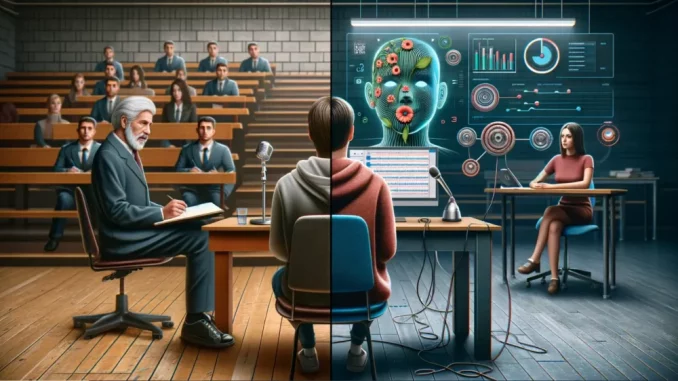
The world of education has undergone a massive transformation over the past few years, and 2025 is shaping up to be its most innovative year yet. With the rise of artificial intelligence (AI), hybrid learning models, and advanced educational technologies (edtech), the traditional classroom is no longer the only path to knowledge. Students today are learning from anywhere, at any time, using tools that adapt to their needs and pace. This article explores the top online learning trends of 2025 and how they’re revolutionizing the future of education.
1. The Dominance of Hybrid Classrooms
Hybrid learning, a blend of in-person and online education, has become the norm rather than the exception. Schools and universities around the world are now offering flexible course formats that allow students to choose whether they want to attend physically or virtually.
Why It Works:
- Increased flexibility for students
- Reduced classroom overcrowding
- Accessibility for students in remote areas
- Recorded lectures for review and repetition
Hybrid classrooms are also using technology like digital whiteboards, cloud-based assignments, and real-time video conferencing to keep learners connected and engaged.
2. Artificial Intelligence (AI) in Education
AI is not just a buzzword—it’s actively transforming the way we learn and teach. In 2025, AI is used for:
- Personalized Learning: AI analyzes student performance and creates customized lesson plans tailored to individual learning styles.
- Automated Grading: Teachers save time by using AI tools to grade quizzes and assignments.
- Virtual Tutors: AI bots are now capable of answering questions, helping with homework, and even coaching students in weak subjects.
- Predictive Analytics: AI can identify students who may be at risk of falling behind and alert teachers in advance.
These advancements make education more efficient, effective, and scalable.
3. Immersive Learning with AR & VR
Augmented Reality (AR) and Virtual Reality (VR) are making subjects like history, science, and geography come to life.
- Students can take virtual field trips to ancient Rome or Mars.
- Medical students can practice surgeries using VR simulations.
- Architecture students walk through 3D models of their designs.
This immersive experience increases retention, curiosity, and engagement among learners of all ages.
4. Gamification of Learning
Gamification is the process of applying game-like elements to educational settings, and it’s booming in 2025.
- Badges, points, and leaderboards make learning fun and competitive.
- Mobile learning apps like Duolingo and Quizizz use this technique to teach languages and quizzes.
- Game-based learning boosts motivation, participation, and long-term memory.
As a result, even students who used to struggle with attention are now more engaged than ever.
5. Microlearning and Bite-Sized Content
Microlearning focuses on delivering content in small, manageable chunks. This trend is perfect for today’s fast-paced learners who prefer studying in short bursts rather than long lectures.
- Lessons are 5–10 minutes long
- Ideal for mobile users
- Perfect for revision and last-minute preparation
Microlearning is especially effective for corporate training and adult learners, allowing them to fit education into their busy schedules.
6. Blockchain for Certification and Academic Records
Blockchain technology is ensuring secure, tamper-proof academic records and credentials. With blockchain:
- Students can access their certificates anytime, anywhere.
- Employers can verify qualifications instantly.
- Cheating and document fraud are reduced.
In 2025, more universities are adopting this technology for both record keeping and digital diplomas.
7. Lifelong Learning Culture
Learning is no longer confined to a specific age or stage of life. In 2025:
- Professionals are taking online courses to upgrade their skills.
- Platforms like Coursera, Udemy, and LinkedIn Learning are offering flexible certifications.
- Education is seen as a continuous journey, not just a one-time achievement.
This lifelong learning trend ensures that people stay competitive in a rapidly changing job market.
Conclusion:
The future of education is already here—and it’s digital, dynamic, and deeply personal. With AI, hybrid classrooms, gamification, and immersive tools leading the charge, students now have more opportunities than ever before to learn in ways that suit them best. As we move further into 2025 and beyond, embracing these trends will be essential for both educators and learners who want to thrive in the evolving world of education.